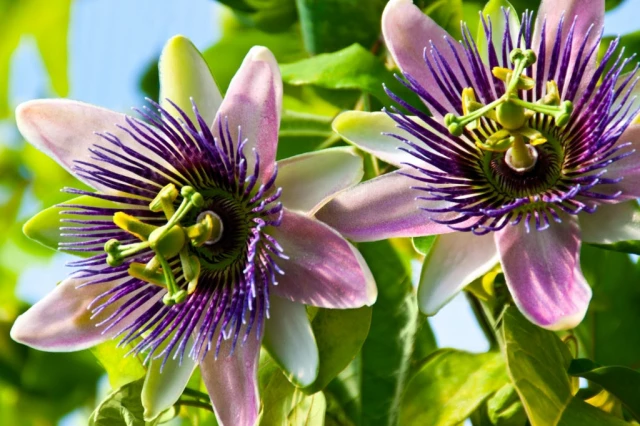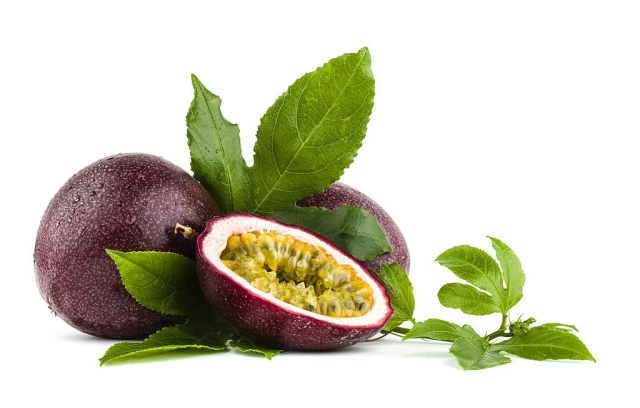Passiflora or the passionflower is one of the mesmerizing flowers, used for decoration purposes. The color ranges for the passion flowers are from white to purple, with almost 550 species around the world. But do these passion flowers produce fruits? Is passion fruit belonging to the passion flowers? Are passion fruit and passionflower the same? Let’s explore passion fruit vs passion flower.
Passion flower and the passion fruit are the same as passion flowers produce the passion fruit. But not all species make passion fruit and not all the fruits of passion flowers are edible. As only a few species produce the fruit among all the 550 species.
Passion Fruit Vs Passion Flowers:
In short, both the passion fruit and the passion flower are the same. Passion flowers are the representatives of the Passifloraceae family. These flowers can be woody and or herbaceous, depending upon the species. However, these flowers like the several other flowers use for ornamental purposes.
Moreover, you can use passion flowers that are not woody for decoration purposes in the house or to cover any area at your place. Because these flowers can grow wildly if you are not trimming them regularly.
As I already discussed that not all species of passion flower make passion fruit. Because only 50 to 60 species produce passion fruit. But at the same time, not all kinds of passion fruits are edible to us.
However, the edible type of passion fruit is the Passiflora Edulis, which means edible passion flower or the passion fruit. Moreover, there are two types of edible fruits of Passiflora Edulis, which are discussed below.
Passiflora Ligularis:
This is an edible type of passion fruit, also known as the sweet granadilla or grenadia. The color of this type of passion fruit is yellow and the flower color of this species is purple.
Yellow passion fruit is less aromatic and has more acidic pulp than the other types of passion fruits. In this type of passion fruit, the edible part is the pulp inside the fruit. But this pulp contains numerous seeds of passion plants.
Passiflora Edulis:
This type of passion fruit contains purple passion fruit, which is smaller in size as compared to the yellow passion fruit. Moreover, this purple passion fruit is more aromatic than the yellow one.
And because of it, you can use this fruit for adding aroma to other dishes. The pulp is also less acidic than the yellow passion fruit, and also has edible seeds. Because of its aroma and sweet taste this fruit is prioritized to use as toppings.
Passion Fruit Grows On Vines, Produces Passion Flowers:
Vines of passion plants can be woody or climbers as well. All the passion plants cannot produce the fruit and not all the passion fruits are edible. But the yellow and purple passion fruits cultivate around the world due to their tart and sweet taste.
Not only this but you can use passion fruits to add aroma to other dishes.
Having passion plant for fruit is not common around the world because this plant is used for ornamental purposes the most.
However, make sure that you are trimming their vines regularly because vines of passion plants can grow wildly. It might be strange to you but after 3-4 years the passion plant starts producing less fruit. That’s why producers keep changing the plant regularly after a few years.
How To Tell When Passion Fruit Is Ready to Pick?
As every fruit has specific signs when ripe properly, similarly passion fruit also show signs when ripe completely. But to pluck the ripe fruit you have to notice the fruit carefully. Because the ripening signs don’t properly appear like the other fruits.
That’s why commonly you know about the ripe passion fruit when it falls on the ground. However, the ripening sign of the passion fruit includes a little bit wrinkled surface. And if you see a completely fine and smooth surface of the passion fruit then keep in mind that the fruit is not fully ripe and it needs 3-4 days for proper ripening.
Uniform color distribution on the surface of the passion fruit is also an indication of ripe fruit.
Why Passion Fruit Is So Expensive?
There are several reasons because of which passion fruit is so expensive. As I already discussed that passion fruit is not commonly harvested like its flowers because not all passion flowers produce fruit.
Moreover, you will get your first fruit after two years of sowing the seeds. This is a long time span for producers and also one of the main reasons that why don’t people prefer to grow these flowers.
Another thing that is a challenge to the producers is the fussiness of the passion flower vines. These vines can mess with the taste of the fruit with a little change in warmth, water, etc.
Not only this but the passion fruit can also be infected with diseases easily that you can lose your entire crop with a bit of negligence.
Collectively all these factors are the cause due to which passion fruit is so expensive that sometimes you have to pay $15 per pound.
Is Passion Flower Or Passion Fruit Poisonous to Humans?
Passion fruit is not poisonous to humans but the peel of purple passion fruit contains the known as cyanogenic glycosides. This compound makes cyanide when combine with enzymes.
Cyanide is a poison and thus a large intake of the purple passion fruit peel can be harmful to humans.
Similarly, passion flowers can be harmful to humans if ingested and can cause stomach upset. Moreover, the roots and foliage of these flowers are toxic to humans.
A Final Thought:
Passion fruit Vs passion flower in detail covered in this article. Both passion fruit and passion flower are the same and belong to the same family. However, the passion plant produces both passion flower and fruit.
Passion flower are commonly used for ornamental purposes because not all passion fruits are edible except yellow and purple passion fruits varieties.


